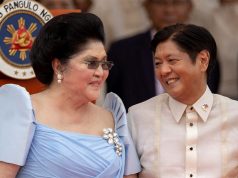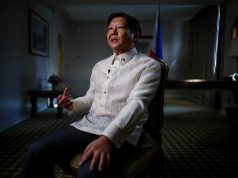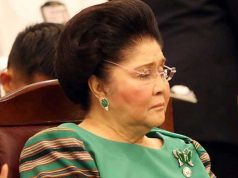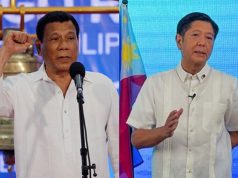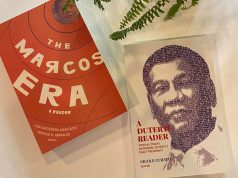Sen. Imee Marcos recently released a video where she runs down five countries for Filipinos to migrate to.
This came days after her interview with Karen Davila where her remark to the reporter about migrating overseas gathered online controversy.
“It’s nice to see you’re still here in the Philippines,” Imee previously quipped at the start of the interview on ANC’s “Headstart” on June 1.
This brief exchange later fueled the online bickering between supporters of Ferdinand Marcos Jr., president-elect, and his critics.
Karen later shared an update that Imee had already apologized to her via text after the episode.
READ: Karen Davila tweets about victory after viral ANC interview
Days later, on June 6, the senator released a video titled “Tara Kape 2: Where to Migrate” on Facebook and Yap’s YouTube channel.
It was written and directed by Darryl Yap, a controversial filmmaker who was recently declared persona non grata in Quezon City.
READ: Explained: Ai-Ai delas Alas, Darryl Yap as ‘personae non gratae’ in Quezon City
In the video, Imee sat behind large paintings of her parents—late dictator Ferdinand Marcos Sr. and Imelda Marcos.
She introduced her spiel by asking viewers whether they are tired of losing.
“Ikaw ba ay pagod na, sawa na, nawalan na ng pag-asa, natalo sa… pag-ibig? Parang gusto mong mamasyal, makalimot or magpakalayo layo, magkaron ng bagong buhay sa ibang bansa,” Imee said.
She then enumerated five countries Filipinos can supposedly migrate to in the meantime.
These are the following:
- France
- Australia
- Singapore
- New Zealand
- Canada
By the end of the video, Imee expressed her view on “earn, learn, return” for those who wished to leave.
“Kung ako ang tatanungin pede kang umalis, pero babalik ka. Lagi kong sinasabi sa Ilocos—earn, learn, return,” she said.
Imee further said: “No hate, wag ka ng mag-migrate, retiring in the Philippines is also great.”
As of writing, the video earned 1.8 million views on the platform.
The post, meanwhile, gathered 24,000 reactions and 1,500 comments.
Labor exportation under the Marcos regime

A 2018 study titled “Education in the ‘New Society’ and the Philippine Labour Export Policy (1972-1986)” documents that the country’s labor export policy was formalized during Marcos’ time, especially during his dictatorship (1972-81).
While the labor achievements at that time did lay the foundation for handling overseas Filipino workers (OFWs), the reason behind such a move was often glossed over.
Mark Maca, author and professor at the Central Luzon State University, explained that Marcos’ labor strategy stemmed from the observed growing discontent among the educated youth at that time.
Maca writes:
“The Marcos-era oral history project (Katayama, et al 2010) and recent biographical accounts (e.g. Sicat ,2014) have supplied critical historical evidence partly confirming labour export strategy as political solution to the growing discontent of the young, educated working (and middle) class towards the abuses and excesses of the Marcos regime.”
An article published in The Atlantic, an American magazine, titled “The Beloved Filipino Tradition That Started as a Government Policy” also stated that the migration of Filipino workers was the solution to financial instability during Marcos’ time.
“When Marcos’s rule ended, the Philippine government codified the balikbayan program into law. But over the years, what was initially meant to be a solution to the country’s financial instability has transformed into a cherished cultural practice across the Filipino diaspora,” Sara Tardiff said.
More criticisms
Her supporters perceived her message as a form of mockery to critics of her brother, some of whom have earlier expressed their desires to migrate overseas should Ferdinand Marcos Jr. win.
Kakampink: I will migrate if Marcos wins.
Me: Why are you still here?
Kakampink: This is my country. I have the right to be here.
— @iamjethol ❤️💚✌🏼👊🏼 (@iamjethol) June 2, 2022
Sociology professor Ash Presto, meanwhile, mentioned the main reason for the surge of OFWs.
“Many Filipinos go abroad for jobs that can better sustain their families—NOT because they hate the elected administration. In the 1970s, labor outmigration was first widely used as a policy to save the economy from Marcos’ corruption,” she said.
Others also criticized Imee for creating such videos despite her brother’s central message of “unity.”
“Why is she like this? Why does she have to gracelessly gloat…” voice-over artist Inka Magnaye said.
“I would like to ask Ms. Imee why they are pushing people to Migrate when she should push Filipino people to stay here and go back here since her brother promised to make Philippines a better country through unity,” another Twitter user said.





